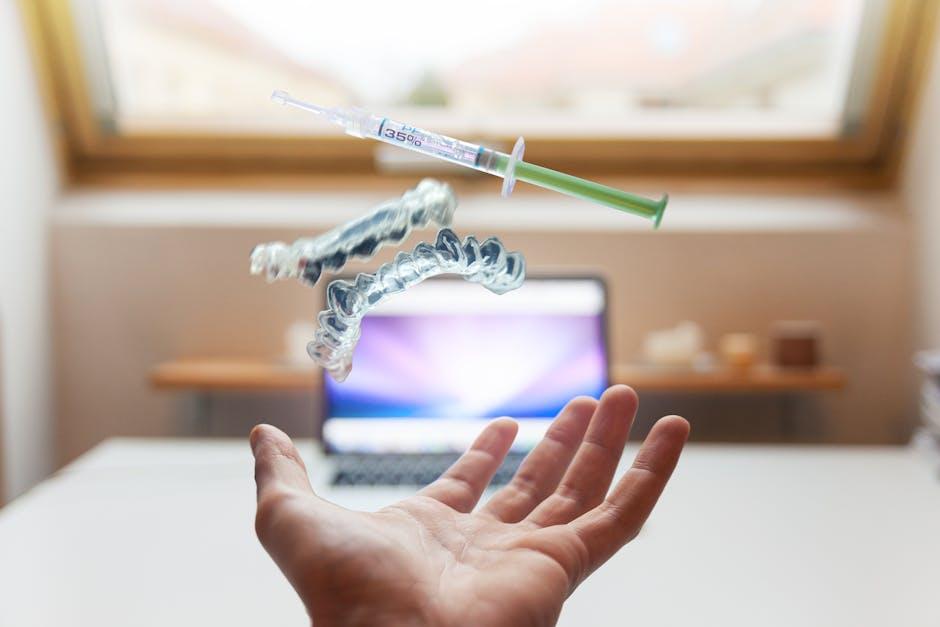
Prescribing Antibiotics for Urgent Dental Care During the Pandemic – Nature
The COVID-19 pandemic has transformed healthcare practices worldwide, and urgent dental care is no exception. With limited access to face-to-face consultations, dentists have increasingly relied on remote diagnosis and judicious use of antibiotics. This shift raises critical questions about antibiotic stewardship, balancing the need for effective infection control with concerns about antibiotic resistance. In this article, we explore the nuances of prescribing antibiotics for urgent dental care during the pandemic, incorporating insights about nature-inspired remedies, practical tips for dentists, and the latest evidence-based practices to optimize patient outcomes.
Understanding Urgent Dental Care and Antibiotic Use During the Pandemic
During the COVID-19 pandemic, many dental clinics limited in-person visits, prioritizing urgent and emergency cases. Urgent dental care typically includes conditions like:
- Severe toothache due to pulpal inflammation
- Dental abscesses with swelling
- Traumatic dental injuries
- Bacterial infections threatening systemic health
Antibiotics are often prescribed to manage bacterial infections and prevent complications. However, the pandemic posed unique challenges to dental prescribing protocols:
- Reduced ability to perform definitive surgical interventions immediately
- Increased reliance on tele-dentistry for initial consultations
- Risks associated with COVID-19 exposure in clinical settings
The Role of Antibiotics in Managing Urgent Dental Infections
Antibiotics are a vital tool for controlling infections, but they should be prescribed judiciously to avoid antibiotic resistance. In urgent dental care, antibiotics:
- Help control spreading infections such as cellulitis or abscesses
- Support symptom relief when immediate drainage or extraction isn’t possible
- Are adjuncts to definitive treatment rather than standalone solutions
When to Prescribe Antibiotics
Antibiotics are recommended only for infections exhibiting signs of spreading or systemic involvement, including:
- Swelling extending beyond the alveolar bone
- Fever higher than 38°C (100.4°F)
- Difficulty swallowing or breathing
- Trismus (limited mouth opening)
In contrast, localized infections without systemic involvement are often better managed with drainage or removal of the infection source rather than immediate antibiotics.
Impact of the Pandemic on Antibiotic Prescribing Practices
The pandemic significantly influenced antibiotic prescribing trends in urgent dental care:
- Increased Antibiotic Prescriptions: Due to postponed dental procedures, many clinicians resorted to antibiotics as temporary management.
- Telehealth Limitations: Remote assessment sometimes led to more cautious antibiotic prescribing to prevent complications.
- Concerns About Overprescribing: Experts warned about the risk of escalating antibiotic resistance during this period.
| Pre-Pandemic Practice | During Pandemic Practice |
|---|---|
| In-person clinical exams prioritized | Tele-dentistry assessments common |
| Antibiotics reserved for clear bacterial infections | More empirical prescribing to avoid physical visits |
| Immediate surgical intervention when needed | Delays due to pandemic restrictions |
| Close antibiotic stewardship monitoring | Challenges in monitoring and follow-up |
Incorporating Nature-Inspired Approaches in Urgent Dental Care
Alongside antibiotics, nature-inspired and adjunctive therapies have gained attention for their potential roles in supporting dental health and infection control. Examples include:
- Antimicrobial Plant Extracts: Essential oils like clove, tea tree, and neem possess natural antibacterial properties.
- Aloe Vera: Soothing properties may support healing of oral tissues and reduce inflammation.
- Probiotics: Emerging evidence supports probiotics for oral microbiome balance and preventing opportunistic infections.
While these natural approaches should not replace conventional antibiotics in emergencies, they may complement treatment and help reduce unnecessary antibiotic use.
Best Practices and Practical Tips for Dentists
To optimize antibiotic prescribing in urgent dental care during the pandemic, dentists should consider the following:
- Comprehensive Remote Assessment: Use detailed patient history and symptom review during teleconsultations.
- Clear Criteria for Antibiotics: Follow clinical guidelines such as those from the American Dental Association (ADA) or your local authority.
- Patient Education: Inform patients on the importance of completing antibiotic courses and signs of worsening infection.
- Use Narrow-Spectrum Antibiotics: Whenever possible, prescribe antibiotics targeting specific pathogens to reduce resistance risk.
- Follow-Up Planning: Schedule timely follow-ups, virtual or in-person, to monitor progress.
- Consider Nature-Based Adjuncts: Recommend safe natural remedies as supportive care but emphasize they are not substitutes for antibiotics if indicated.
Sample Antibiotic Prescribing Protocol for Urgent Dental Care
| Condition | First-Line Antibiotic | Duration |
|---|---|---|
| Localized abscess without systemic signs | No antibiotics; drainage preferred | N/A |
| Cellulitis with swelling & fever | Amoxicillin 500 mg TID | 5-7 days |
| Penicillin allergy | Clindamycin 300 mg QID | 5-7 days |
| Severe systemic involvement | Refer for emergency care | N/A |
Case Study: Remote Antibiotic Management in Pandemic Conditions
In early 2021, a 34-year-old patient contacted a dental clinic reporting worsening swelling and pain in the lower jaw during a COVID-19 lockdown. Due to restrictions, the dentist conducted a thorough teleconsultation and identified signs of spreading cellulitis. Immediate in-person treatment was impossible. The dentist prescribed a 7-day course of amoxicillin and monitored symptoms daily via video calls. The swelling diminished after 48 hours, and once restrictions eased, the patient received definitive treatment with dental extraction. This case highlights the critical role of judicious antibiotic use combined with telehealth during the pandemic.
Conclusion
Prescribing antibiotics for urgent dental care during the COVID-19 pandemic requires a balanced, evidence-based approach. While antibiotics remain essential to managing serious infections, overuse can lead to resistance and adverse effects. Dentists must integrate thorough patient assessment, follow clinical guidelines strictly, and consider nature-inspired adjuncts to promote healing and reduce unnecessary prescriptions. With ongoing challenges posed by the pandemic and evolving healthcare models, thoughtful antibiotic stewardship in dental care is more important than ever to protect patient health and global antibiotic efficacy.
Stay informed, stay cautious, and prioritize patient-centered care in every antibiotic decision you make.


